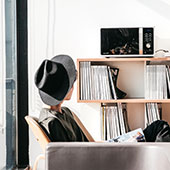- Feb 28, 2017
- by Pixel-Mafia
- in Branding + Design
The Balance of Beautiful vs.
Functional UX/UI Design

AAs designers we all experience the combative relationship between technical requirements and visual design aspirations. So how do we get these two rowdy children to put down the paintball guns and play nice? Glad you asked. They both want to be your favorite. They both want your attention. So, let's dive into parenting 101.
In any given project, technical requirements and creative requirements are meant to compliment each other. The visual prowess of your mockup doesn't matter if it's a dud from a features standpoint. On the flip side, it can be a technical masterpiece but fail because it's uninspiring visually. As designers we may favor one over the other. This 'favoritism' can be due to:
To manage the delicate equilibrium of your design project, you need to give an equal amount of attention to accomplishing the creative requirements and the technical requirements.
It is important to outline, organize, and architect the technical requirements early in the project to let them inform the user interface designer as they create page mockups. At Pixies, we front-load our projects with user experience-type deliverables (technical requirements documents, UX research, site maps, low fidelity wireframes) so that our UI designers are well-informed. This allows them to innovate the visual design of these features without fear of misusing the budget.
Throughout the entire project lifecycle there should be checkpoints scheduled for technical, user experience, and user interface specialists to review the design to ensure all requirements are met and that scope creep has not occurred. All technical requirements and creative requirements should be accounted for at the end of the project if the right team members are discussing requirements throughout the process.













This theme is amazing, I mean from the coding all the way to design. Such creativity is backed with so many options and elegance! You can create anything with this theme! It just make sense!